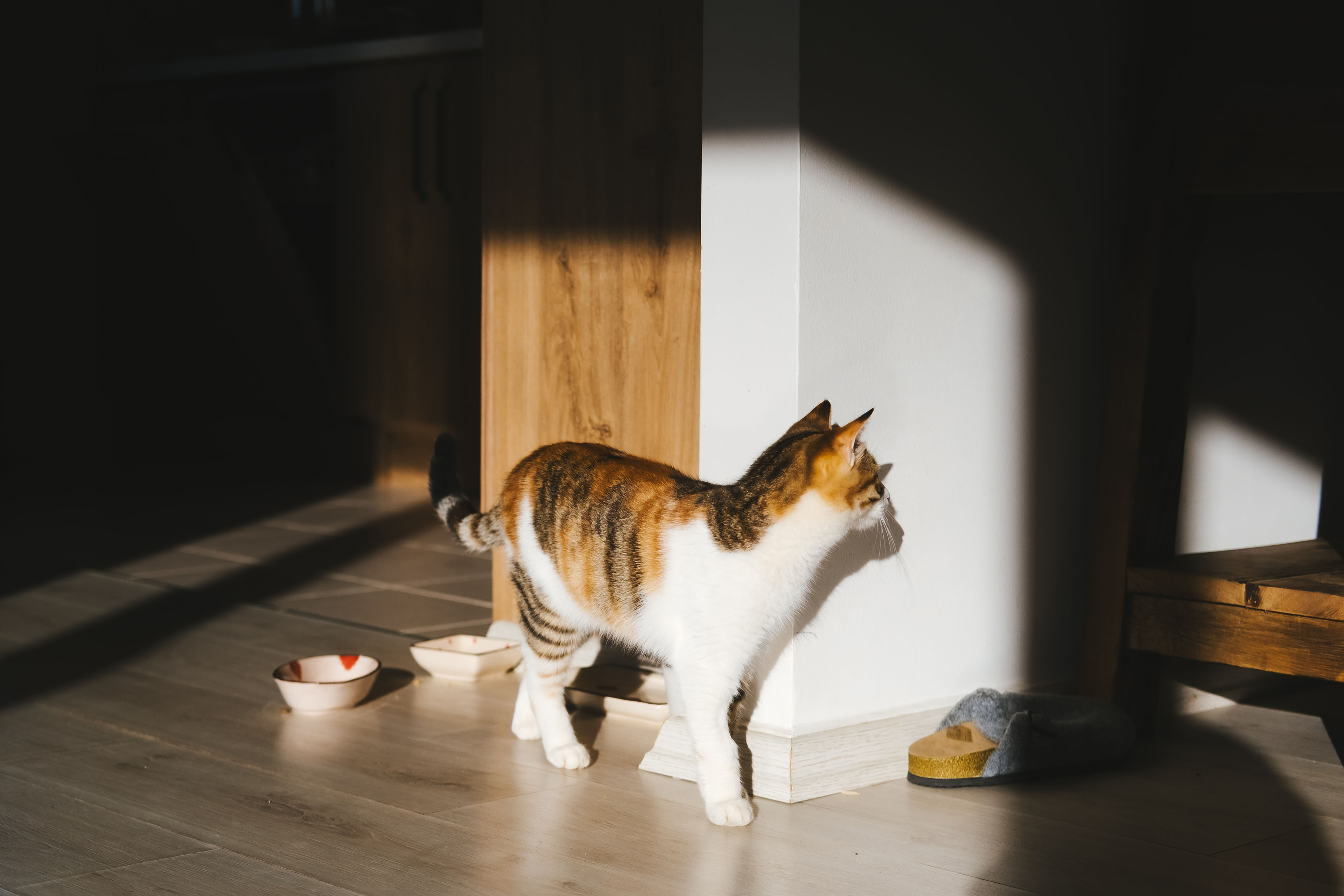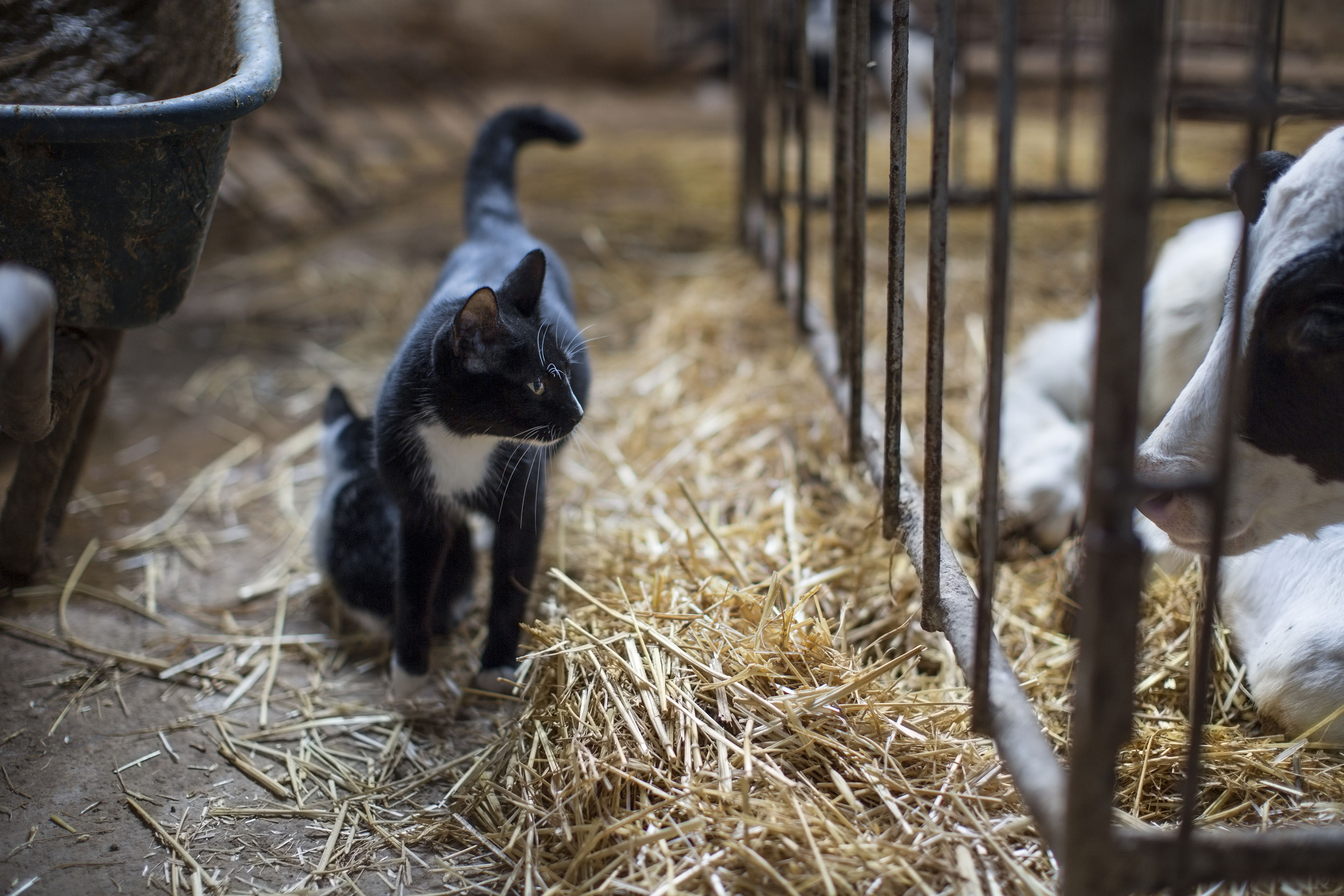Greater than 80 home cats, amongst many different forms of mammals, have been confirmed to have had chook flu since 2022 — typically barn cats that lived on dairy farms, in addition to feral cats and pets that spend time open air and sure caught it by searching diseased rodents or wild birds.
Now, a small however rising variety of home cats have gotten sick from H5N1, the chook flu pressure driving the present U.S. outbreak, after consuming uncooked meals or consuming unpasteurized milk. A few of these cats died.
The pressure of chook flu at present circulating has not tailored to effectively unfold amongst individuals. And there have been no identified circumstances of cat-to-human transmission throughout the present outbreak of H5N1.
Nonetheless, there’s at all times been the danger that cats, that are arguably solely semi-domesticated, may convey residence a illness from a midnight prowl.
“Companion animals, and especially cats, are 100% a public health risk in terms of the risk of zoonotic transmission to people,” mentioned virologist Angela Rasmussen, who research illness development in rising viruses on the College of Saskatchewan’s Vaccine and Infectious Illness Group.
It’s because we snuggle with and sleep in mattress with our cats. After we’re not wanting, cats drink from our water glasses and stroll on kitchen counters. So, cat homeowners ought to pay attention to the continued unfold of chook flu. “By reducing the risk to your cats, you reduce the risk to yourself,” Rasmussen mentioned.
Rasmussen doesn’t suppose pet homeowners must be afraid their cats will give them chook flu however mentioned taking precautions is sweet for pets, and for public well being.
Indicators of chook flu in cats embody runny nostril and discharge across the eyes, defined Michael Q. Bailey, president-elect of the American Veterinary Medical Affiliation.
H5N1 additionally causes neurological issues like dizziness and seizures, that are signs of rabies, too. Rabies is sort of at all times deadly, and it poses a menace to human well being, so any animal suspected of getting the viral illness should be euthanized. Bailey encourages individuals to make sure pets are up-to-date on their vaccinations.
Veterinarian Jane Sykes, who makes a speciality of infectious illnesses in cats and canines on the College of California-Davis College of Veterinary Drugs, mentioned individuals shouldn’t assume it’s chook flu if their cat is sick — even when their animal spends time open air or eats a uncooked weight-reduction plan. Higher-respiratory sicknesses are frequent in cats, whereas H5N1 is “still pretty rare.”
Sykes provides her indoor cat, Freckles, common kibble solely. She advised NPR and KFF Well being Information she has no considerations about Freckles getting H5N1 as a result of the heating course of of constructing dry or canned pet meals kills viruses.

Extra Instances in Cats, Extra Danger to People
Some individuals feed their pets uncooked meat or unpasteurized milk as a result of they suppose it’s a extra nutritious or pure weight-reduction plan. The American Veterinary Medical Affiliation’s web site discourages this attributable to foodborne pathogens like salmonella and listeria, and now the extremely pathogenic H5N1.
By protecting pets wholesome, veterinarians play an important position in defending people from zoonotic illnesses. The American Veterinary Medical Affiliation says the danger of H5N1 spilling over from a pet to an individual is “considered extremely low, but not zero.”
State and native public well being companies, together with these in Los Angeles County and Washington state, have issued comparable warnings towards uncooked meals diets for pets.
Issues for human well being are partly why the FDA introduced final month it’s now requiring cat and pet food corporations to replace their security plans to guard towards chook flu.
This got here after the Oregon Division of Agriculture found a cat that was “strictly an indoor cat” had contracted H5N1 and died after consuming a frozen turkey product made by the uncooked pet meals model Northwest Naturals. It acknowledged that “tests confirmed a genetic match between the virus in the raw and frozen pet food and the infected cat.”
Northwest Naturals voluntarily recalled that batch of its frozen turkey-based product. The corporate advised KFF Well being Information and NPR that the recall concerned “a small product run” and that it has considerations concerning the accuracy of the Oregon Agriculture Division’s testing.
Los Angeles County’s public well being division mentioned 5 cats from two households examined constructive for chook flu after consuming unpasteurized uncooked milk from the Uncooked Farm dairy in California’s Central Valley.
Uncooked Farm voluntarily recalled its milk and cream after retail merchandise examined constructive for H5N1, nevertheless it denies any meals issues of safety, calling the priority “a political issue.”
Veterinarians additionally warn pet homeowners to not enable cats unsupervised time outdoors as there’s the danger of them getting H5N1 by interacting with different animals which may carry the illness.
“This is a very scary virus, given that it can infect so many different host species,” mentioned Bruce Kornreich, director of Cornell College’s Feline Well being Middle.
At the least one occasion of a cat infecting an individual with chook flu occurred in 2016. As NPR reported, a veterinarian in New York Metropolis caught the virus after having shut contact with contaminated cats. The vet skilled delicate signs and shortly recovered.
In that case, the pressure of chook flu was H7N2, not the H5N1 that’s now circulating within the U.S.
H7N2 is a really totally different kind of virus, Sykes defined. However she mentioned it reveals that cat-to-human transmission of avian influenza is theoretically potential.
There isn’t a whole lot of analysis on transmission of chook flu from companion animals like cats or canines to people, although Rasmussen agreed it’s positively a priority: The extra infections you’ve in animals, “the more your luck is potentially going to run out.”
Most individuals who’ve caught H5N1 are agricultural employees who had direct contact with contaminated poultry or cattle. Of at the least 67 confirmed human circumstances of H5N1 within the U.S., there’s been one fatality in an immunocompromised one who had contact with birds.
Usually, zoonotic illness researchers need extra H5N1 surveillance in companion animals of every kind. Even when the human loss of life toll of H5N1 stays comparatively low, it stays a public well being danger.

Probabilities for Mutation
A part of the priority with this H5N1 outbreak is that chook flu viruses change. Only a few mutations may make this pressure adept at spreading between individuals. And the extra individuals who catch H5N1, the extra doubtless it might adapt to be extra environment friendly, mentioned Suresh Kuchipudi, a virologist on the College of Pittsburgh College of Public Well being, the place he researches zoonotic illnesses. Kuchipudi has studied H5N1 in cats.
One other concern is one thing known as reassortment. If an animal or particular person is contaminated with two viruses without delay, the viruses can commerce genetic materials, creating one thing new. That is frequent in influenza, so virologists are looking out for a case by which the chook flu reassorts to make a virus that’s way more contagious, and doubtlessly extra virulent.
Virologist Rasmussen is far more apprehensive about this taking place in pigs. Human respiratory physiology is extra like that of swines than felines. To date, the present outbreak of H5N1 has not reached business hog operations. Rasmussen hopes it stays that manner.
Kuchipudi mentioned that reassortments are comparatively uncommon occasions, however the consequence is totally unpredictable. Generally the outcomes are benign, although it was doubtless a reassortment that concerned an avian virus that led to the 1918 flu pandemic, which killed an estimated 50 million individuals. Within the century since, virologists have established a worldwide surveillance community to watch influenza viruses. Scientists say continued funding on this community is essential to making ready for and hopefully stopping one other pandemic.
Winter is “reassortment season” due to all of the influenza viruses circulating, Rasmussen mentioned. A reassortment in cats may technically be potential since these pets often get seasonal flu, nevertheless it’s extremely unlikely. Somewhat, Rasmussen mentioned, it’s extra doubtless {that a} cat would go H5N1 to a human who already has seasonal flu, after which a reassortment occurs within the sick particular person. Whereas the danger isn’t zero, Rasmussen doubts this can occur. It will depend upon how ailing the human was, and the way a lot virus they’re uncovered to from their cat.
“Unless the cat is really shedding a ton of virus, and you’re kind of making out with the cat, I think it would be hard,” she mentioned.
Rasmussen and Kuchipudi warning there isn’t sufficient analysis to know for certain how a lot virus cats shed, and even how they shed the virus.
The Facilities for Illness Management and Prevention was poised to launch a brand new research about H5N1 in cats, however that was delayed when the Trump administration paused the Morbidity and Mortality Weekly Report. That investigation, revealed via emails obtained by KFF Well being Information in a public data request, discovered that home cats doubtless obtained chook flu from dairy employees.
Scientists and public well being companies ought to query beforehand held assumptions about chook flu, Kuchipudi urged. He famous that 20 years in the past no one would have predicted that chook flu would infect dairy cattle as it’s now.
Canine Appear To Fare Higher
The FDA says different domesticated animals, together with canines, can get chook flu infections. There are not any confirmed circumstances of H5N1 amongst canines within the U.S., although in different international locations they’ve died from the virus.
There’s some disagreement and an total lack of analysis on whether or not cat biology makes them extra prone to H5N1 than different mammals, together with people, pigs, or canines.
However cat behaviors, resembling their love of dairy and predation of untamed birds, put them at greater danger, Kuchipudi mentioned. Additionally, dwelling in teams would possibly play a task as there are extra feral cat colonies within the U.S. than packs of stray canines.
There’s little or no individuals can do concerning the H5N1 circulating in wild birds. As Rasmussen defined, “It’s flying around in the skies. It’s migrating north and south with the seasons.”
However she mentioned there’s loads individuals can do to maintain the virus out of their houses.
That features limiting a pet’s publicity to H5N1 by not feeding them uncooked meals or unpasteurized milk, and attempting to maintain them from interacting with animals like rodents and wild birds that might be contaminated with the virus.
This text is from a partnership that features NPR and KFF Well being Information.




